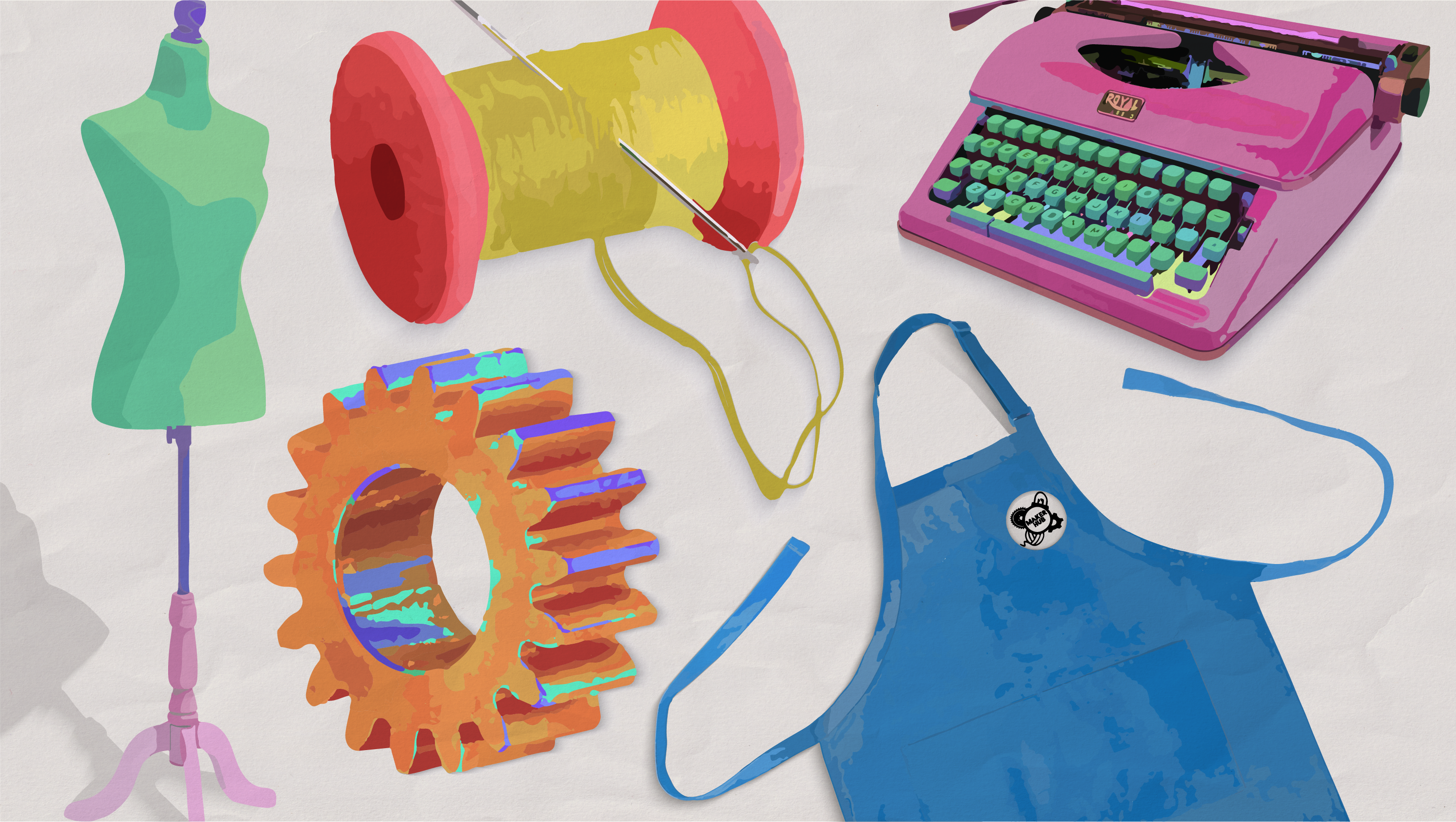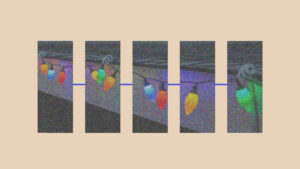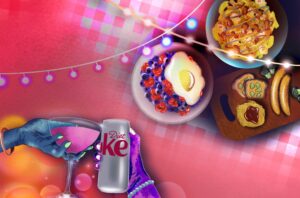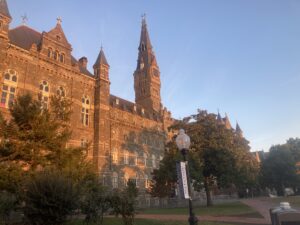At my high school, like many others, seniors have a tradition of decorating their graduation caps with college logos, inspirational quotes, or family photos. When I got into Georgetown in March 2020, I immediately workshopped ideas to make mine stand out. It was one week into COVID-19 lockdown and there was no guarantee that we’d even have a commencement ceremony; but mourning my senior spring and encumbered by never-ending days, I didn’t have much to lose. I spent painstaking all-nighters using tweezers to stick navy and silver rhinestones onto a six-by-six-inch letter “G,” finishing off the cap with fabric flowers and a blue border. By the end, my back hurt, my hands cramped, and my fingertips were hardened with superglue—but it was one of the best parts of my time in quarantine.
I’ve always enjoyed spending hours crouched on my bedroom floor, materials scattered about while I plot my next masterpiece. When we went into quarantine, weeks of isolation became months, and I started college exactly where I had been for the past 18 years: New Jersey. All there was to do, besides go to Zoom classes and aimlessly walk outside, was beautify the walls and objects I stared at day in and day out. Arriving at Georgetown my sophomore year, I worried that the constraints of dorm life would force me to give up my creative endeavors; there was barely enough room for myself and my suitcase in Kennedy, let alone a hot glue gun.
Then I found the Maker Hub—a place that could fill the hole left by my craft supply closet. Incidentally, I needed a work-study job, and they happened to be hiring staff and volunteers to assist visitors with their projects and maintain the space and tools. This sounded like the perfect gig for a social butterfly with an extensive arts background, so as a person who fit neither description, I feared I’d be in over my head. Still, I applied, wanting to pick up new skills and step outside my comfort zone. I had no idea being hired would launch the most formative experience of my three years on campus.
At the time, my only perception of the Maker Hub was that it was a glorified Michaels. In the years since, I’ve learned that it’s first and foremost about inspiring Hoyas—not artistic ability, engineering prowess, or any of its fancy tools. It also has its own vibrant community of student volunteers with incredibly expansive skill sets who donate their scant free time to share knowledge with our visitors and one another.
Anyone with a NetID can come in during open hours and use our materials free of charge, as we encourage students and faculty to create with no stakes; but people often find us out of necessity rather than curiosity. While unfortunate, it’s understandable—the Georgetown ecosystem is fast-paced and stressful, so hobbies can fall by the wayside. But you might realize that the Maker Hub will push you in unexpected ways. It’s taught me how to approach challenges with imagination and efficiency; it’s allowed me to collaborate with a team of kind, driven, intelligent people whose academic backgrounds span undergraduate and graduate programs; it gave me the guts to pursue leadership at the Voice, to be a tour guide, to willingly enter unknown circumstances, and to welcome new opportunities.
As a second-semester senior, it’s hard to resist sappy reflection, but I find it nearly impossible when I think about how grateful I am to David Strout, the Maker Hub manager who hired me and has been my boss since. My first semester on campus was his first at Georgetown, and with the rest of the staff, we had to revive and operate unfamiliar machines that had been defunct for two years during the pandemic. While working with people who were passionate and determined—about both their own projects and improving the collective space—I became more invested in fostering a welcoming environment for others, wanting to pay forward the kinship and creativity it cultivated for me.
When conceptualizing this piece about the Maker Hub, I decided to take on another unprecedented challenge: creating the accompanying graphics. I’ve picked up digital design skills in my time there, but never tackled something this daunting, and knew I would need guidance. Sure enough, my coworkers-turned-friends eagerly lent their expertise as I played around with colors and illustrations; they even sat by my side for hours while I tried to figure out how to make shadows. This serendipitous full-circle moment only reaffirmed my gratitude for the space—one that encourages students to try new things without judgment, extending support whenever they need it.
Even after three years, I still love seeing the wonderment on a person’s face when they walk through the door for the first time, and sympathize with disappointed seniors who wish they had found it sooner. I never tire of watching someone surprise themselves with their own skills and ingenuity. I haven’t gotten sick of descending into the furnace that is Lau 1, of hearing the Taco Bell “ding!” when someone rings our doorbell, or of threatening people with the Crocs of Shame when they forget to wear closed-toe shoes (we have saws in there, guys!). It’s warm and lively and goofy; it’s everything I could ask for from a campus community.
As my next commencement draws nearer, I’ve thought a lot about the pieces of this campus I’ll take with me. All of the clothing I’ve helped repair, the 3D prints I’ve run during finals week, and the countless times I’ve asked “how can I help you?” have imparted invaluable lessons about persistence and teamwork. But spending my days in the Maker Hub as a student, not a staff member, is what I’ve found most affecting. Immersing myself in an environment so welcoming and fun, full of people so kind and dedicated, has indelibly altered my life—more than any endeavor with rhinestones and superglue ever could.





